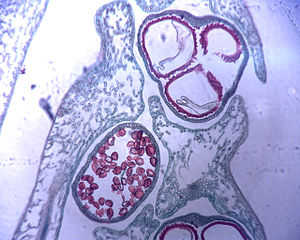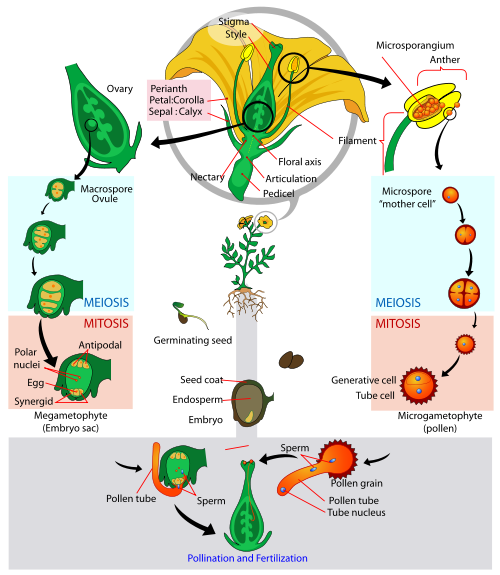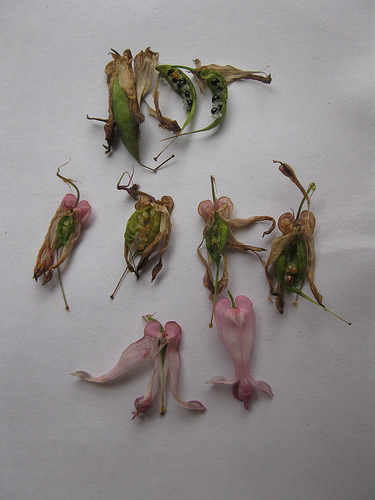Reproduction
Terms to know for Dicentra formosa reproduction:
Alternation of Generations- a life cycle in which there is both
a multi-cellular diploid form, the sporophyte, and a
multi-cellular haploid form, the gametophyte
Gametophyte- the multi-cellular haploid form that produces
haploid gametes by mitosis
Sporophyte- the multi-cellular diploid form
that results from the union of gametes, it produces haploid
spores by meiosis that develop into the gametophyte
Heterosporous- a term referring to a plant
species that has two kinds of spores: microspores and
 megaspores
megaspores
Microspore- a spore from a heterosporous plant
species that develops into a male gametophyte
Megaspore- a spore from a heteropsorous plant
species that develops into a female gametophyte
In figure to the left, it shows a heterospore plant with
microspores and megaspores.
Definitions from Campbell, "Biology", 8th Edition
Just like every other plant, Dicentra formosa
(Pacific Bleeding Heart) reproduces by
alternation
of generations. Unlike meiotic and zygotic
fertilization,
alternation of generations has both a multi-cellular
diploid and haploid phase. Alternation of
generations is a complex life cycle starting with
the zygote of the plant. The zygote, or the juvenile
plant, grows into the adult sporophyte by mitosis.
From here, the sporophyte generates spores via
meiosis that will grow into gametophytes. In the
Pacific Bleeding Heart, the sporophyte produces two
types of spores, which makes it a heterosporous
plant. The two spores are called microspores and megaspores.
and megaspores.
The microspores grow into the male gametophyte, and the megaspores grow into the female gametophyte; both grow via mitosis. In the gametophyte, haploid gametes are produced by mitosis and each produces its corresponding gametes (male gametophyte produces male gametes and female gametophyte produces female gametes). Once produced, the gametes fertilizes to create a diploid zygote.
Since spores are not motile, pollinators are
needed to spread the spores in order for them to
grow into gametophytes and fertilize. These
pollinators include insects, rain, and wind.
However, the most important of these are the
insects. The insects spread the spores by landing on
the anther (microsporangium) and ovary
(megasporangium) of the flower getting spores stuck
to their legs and mixing the different spores
together. The spores then fall off of the insects, land, and grow
into gametophytes. When the gametes fertilize, a
germinating seed is produced in the pods of the
flowers and, with the help of ants (read more in
interactions), the seeds are distributed across
the land.
spores then fall off of the insects, land, and grow
into gametophytes. When the gametes fertilize, a
germinating seed is produced in the pods of the
flowers and, with the help of ants (read more in
interactions), the seeds are distributed across
the land.
Continue to
Interactions of the Pacific Bleeding Heart
Return
Home